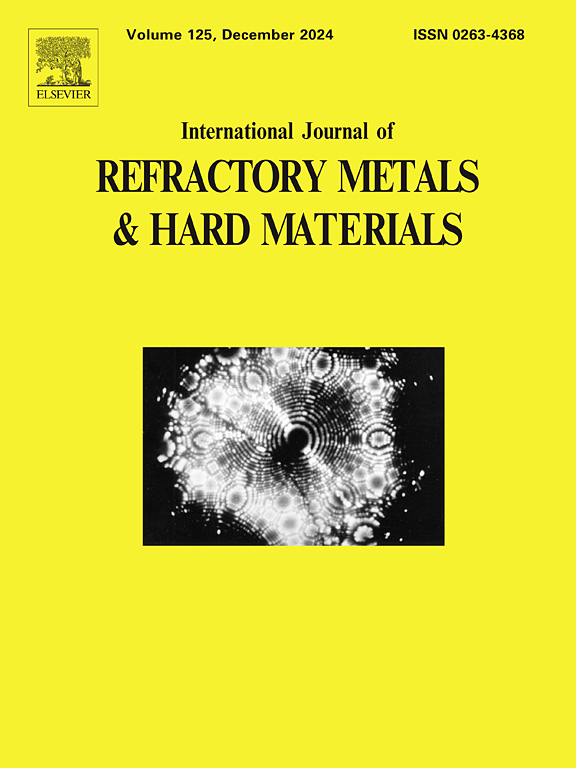Effects of raw powder characteristics on microstructure and mechanical properties of W20Cu composites manufactured by SLM
IF 4.2
2区 材料科学
Q2 MATERIALS SCIENCE, MULTIDISCIPLINARY
International Journal of Refractory Metals & Hard Materials
Pub Date : 2024-12-03
DOI:10.1016/j.ijrmhm.2024.107001
引用次数: 0
Abstract
Selective laser melting (SLM) technique is a promising method to achieve near-net-shaping of W![]() Cu complex components. In this work, two types of raw powers were prepared, including spherical W
Cu complex components. In this work, two types of raw powers were prepared, including spherical W![]() Cu composite powder and mixed W
Cu composite powder and mixed W![]() Cu powder. Effect of the raw powder characteristics on the microstructure and mechanical properties of W
Cu powder. Effect of the raw powder characteristics on the microstructure and mechanical properties of W![]() 20Cu alloy were investigated. The results show that the composite powder enables the W
20Cu alloy were investigated. The results show that the composite powder enables the W![]() Cu composites to possess a high relative density (95.1 %), homogeneous microstructure and super mechanical properties (204.40 ± 1.73 HBW for hardness and 500 MPa for tensile strength). Remarkably, compared to mixed powder, the tensile strength and hardness are increased by 37 % and 74.2 %, respectively. This good effect stems from the composite powder with good sphericity degree and uniform structure. As a result, a dense specimen with refined W particles (3.05 μm) evenly embedded in the Cu matrix phase, accompanied by dislocation structure and sub-grains within the Cu matrix are obtained, contributing to the superior mechanical properties of the composites. The present work offers a strategy for developing high-performance W
Cu composites to possess a high relative density (95.1 %), homogeneous microstructure and super mechanical properties (204.40 ± 1.73 HBW for hardness and 500 MPa for tensile strength). Remarkably, compared to mixed powder, the tensile strength and hardness are increased by 37 % and 74.2 %, respectively. This good effect stems from the composite powder with good sphericity degree and uniform structure. As a result, a dense specimen with refined W particles (3.05 μm) evenly embedded in the Cu matrix phase, accompanied by dislocation structure and sub-grains within the Cu matrix are obtained, contributing to the superior mechanical properties of the composites. The present work offers a strategy for developing high-performance W![]() Cu composites using SLM technology.
Cu composites using SLM technology.
求助全文
约1分钟内获得全文
求助全文
来源期刊
CiteScore
7.00
自引率
13.90%
发文量
236
审稿时长
35 days
期刊介绍:
The International Journal of Refractory Metals and Hard Materials (IJRMHM) publishes original research articles concerned with all aspects of refractory metals and hard materials. Refractory metals are defined as metals with melting points higher than 1800 °C. These are tungsten, molybdenum, chromium, tantalum, niobium, hafnium, and rhenium, as well as many compounds and alloys based thereupon. Hard materials that are included in the scope of this journal are defined as materials with hardness values higher than 1000 kg/mm2, primarily intended for applications as manufacturing tools or wear resistant components in mechanical systems. Thus they encompass carbides, nitrides and borides of metals, and related compounds. A special focus of this journal is put on the family of hardmetals, which is also known as cemented tungsten carbide, and cermets which are based on titanium carbide and carbonitrides with or without a metal binder. Ceramics and superhard materials including diamond and cubic boron nitride may also be accepted provided the subject material is presented as hard materials as defined above.

 求助内容:
求助内容: 应助结果提醒方式:
应助结果提醒方式:


